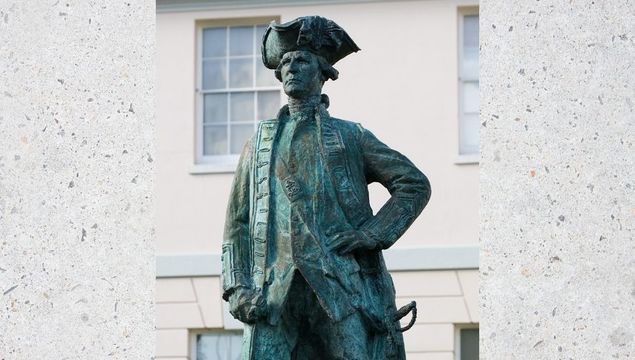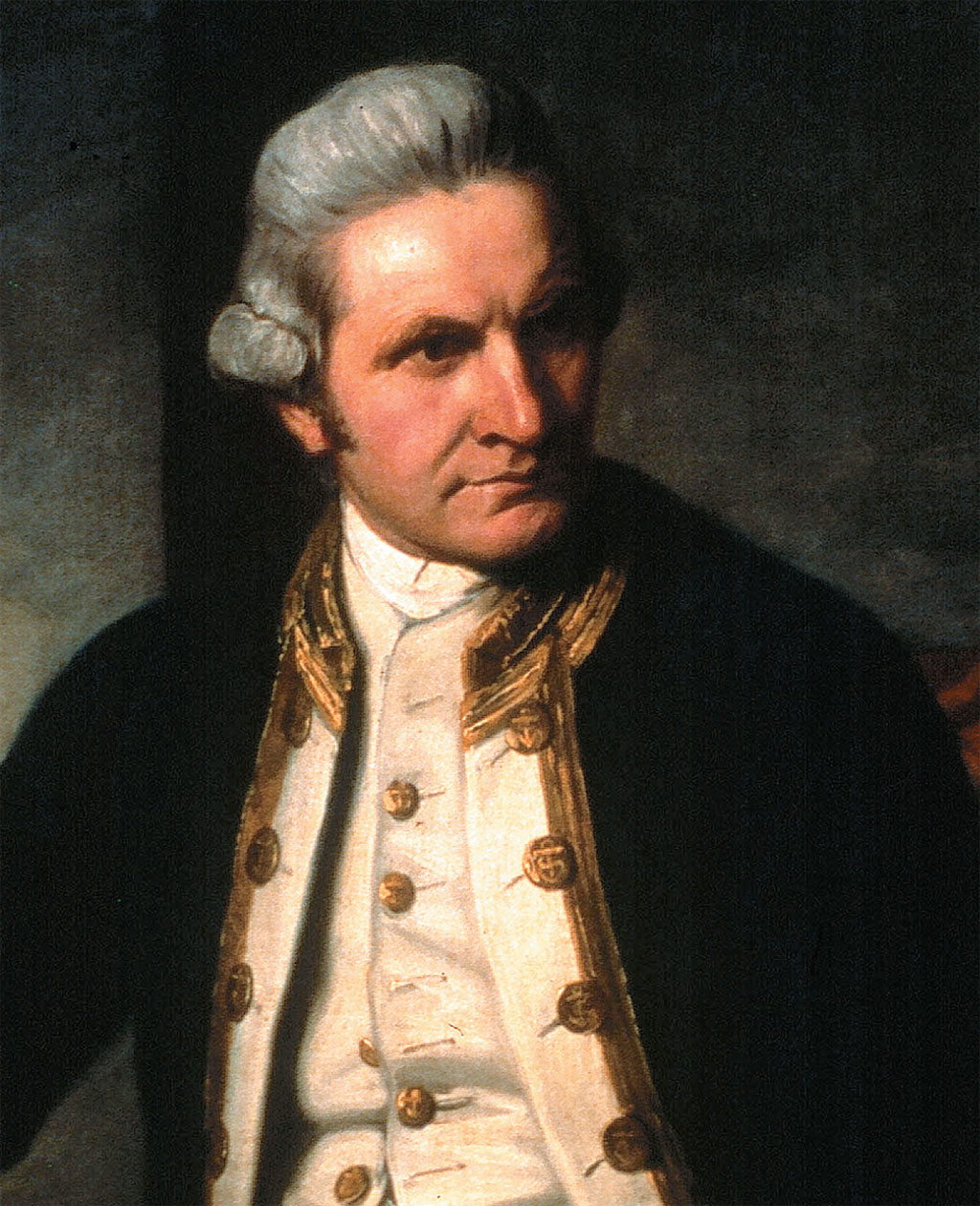
Captain James Cook.Diliff / Creative Commons.
In April 1770, Captain James Cook and his crew became the first known Europeans to reach the east coast of Australia, making landfall near present-day Point Hicks, and then proceeding north to Botany Bay. Today we look at the life and accomplishments of the great explorer.
From the 16th to the 18th centuries, explorers were the superstars of their day: Magellan, da Gama, Cabot, Vespucci, Hudson, and more. But the greatest of these was Captain James Cook.
Born in North Yorkshire in 1728, as a teenager Cook signed on as a merchant seaman in the coastal coal trade. He taught himself the skills of navigation and in 1755 joined the Royal Navy. He spent five years surveying Atlantic Canada, producing the first accurate charts of the coast of Newfoundland.
In 1768 Cook was given command of Endeavour and sent to the Pacific to observe a rare transit of Venus across the Sun. Cook was charged too with searching the South Pacific for the mythic continent known as Terra Australis. In the process, he mapped the complete New Zealand coastline and became the first European to see Australia’s east coast. When Cook returned home in 1771, he’d been at sea three years.
Though Cook’s journey brought him celebrity, he had failed to find Terra Australis. The next year he tried again, this time commanding Resolution. He became the first to circumnavigate the globe around Antarctica. Before returning home, Captain Cook had put Easter Island, Vanuatu, South Georgia, the South Sandwich and Friendly Islands on the map.
Cook set out a third time in 1776, again in Resolution. He became the first European to set foot in Hawaii. Then, he charted the west coast of North America from California to the Bering Strait. On his return to Hawaii in 1779, a contretemps with the natives resulted in Cook’s death at their hands.
Captain Cook never lived to enjoy the accolades his accomplishments deserved, but those are the chances he willingly took.

THE GRANGER COLLECTION, NEW YORK





Comments